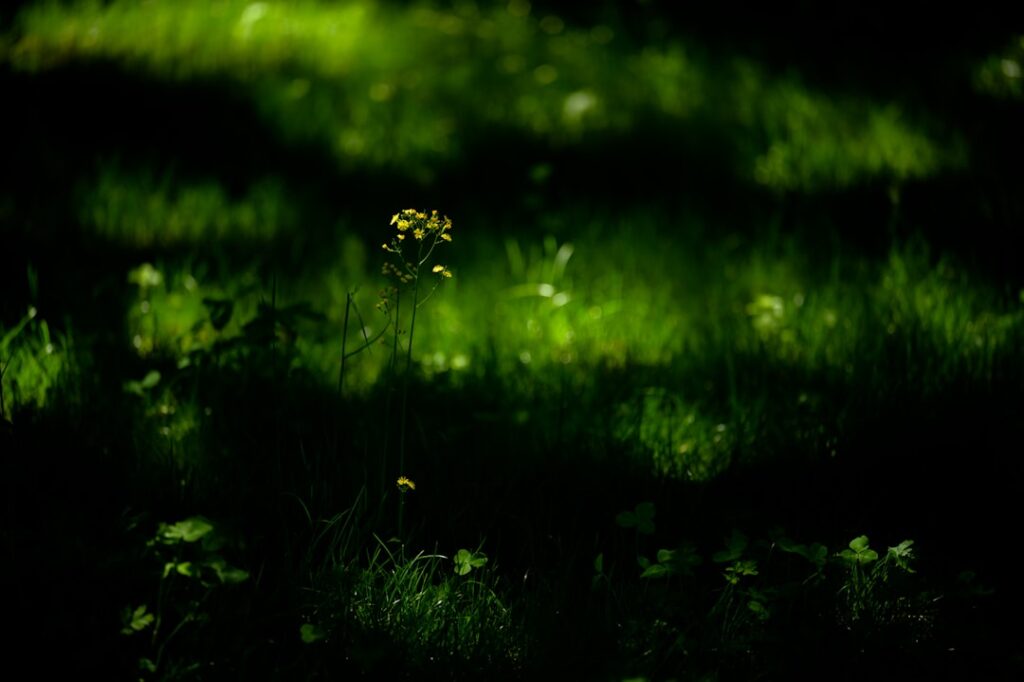There’s a specific moment, just as the deep blue of dusk settles in, when my back porch becomes the best seat in the house. The heat of the day gently recedes, the crickets begin their nightly chorus, and then it happens: a single, silent spark of light hovers over the lawn. Another follows, and then another, until the yard is filled with a slow, drifting constellation of tiny lanterns. For years, I simply accepted this as summer magic, a beautiful and mysterious display. But one evening, a quiet curiosity took hold. I wanted to understand, not to dispel the magic, but perhaps to appreciate it on a deeper level. My small, personal investigation into the world of fireflies led me to the calm and fascinating science of bioluminescence.
The Gentle Chemistry of a Firefly’s Glow
The beautiful, ethereal light of a firefly has a scientific name that sounds far more complex than the process it describes: bioluminescence. At its heart, it’s simply life creating light. It’s a natural, chemical process, but there’s no intimidating textbook required to understand its quiet elegance.
Imagine a tiny, internal lantern inside the firefly. This lantern holds two key substances. The first is a molecule called luciferin, which you can think of as the fuel. The second is an enzyme called luciferase. An enzyme is a helper; its job is to start a reaction. When a firefly decides to light up, it introduces oxygen into the mix. The luciferase enzyme then helps the oxygen combine with the luciferin, and the result of this gentle reaction is a spark of light.
What I found most peaceful about this discovery is the efficiency of it all. Unlike a light bulb in our homes, which loses most of its energy as heat, a firefly’s light is “cold light.” Nearly 100% of the energy from the chemical reaction is converted directly into light. It’s a perfect, waste-free system that nature has refined over millions of years. There is no frantic energy, only a calm, controlled, and beautiful outcome.
A Silent Conversation in the Dark
Understanding the “how” naturally led me to the “why.” Why do fireflies go through all this trouble to produce their signature glow? The answer transformed my view of the backyard spectacle. I wasn’t just watching random sparks; I was witnessing a complex and silent conversation.
The primary reason for their light is communication, particularly for finding a mate. Each species of firefly has its own unique flashing pattern, like a secret code. The males fly around, flashing their specific signal—a specific number of blinks at a specific pace. Down in the grass, the females watch. If a female sees a pattern she recognizes and fancies, she will flash a response back at him. It’s a gentle call-and-response, a romantic dialogue written in light.
Suddenly, the random flickers I saw every night took on new meaning. I was no longer a passive observer of something magical, but a privileged witness to countless quiet conversations. The science didn’t remove the magic; it gave it a narrative.
Deeper Understanding, Deeper Calm
This journey from simple wonder to gentle understanding has changed how I experience those summer evenings. The magic is still there, but it’s richer now. I see the efficiency of nature in every cold flash of light. I feel the quiet hope of a male firefly signaling into the darkness and the patient response of a female hidden in the grass.
Knowing the science behind the firefly’s light hasn’t made it mundane. Instead, it has deepened my sense of connection to the natural world. It’s a reassuring reminder that even the most enchanting mysteries have simple, elegant explanations that only add to their beauty. The world of science isn’t always about stark labs and complex equations; sometimes, it’s about sitting quietly on a porch and learning to understand the language of light.
Photo by Atsushi Tsubokura on Unsplash

